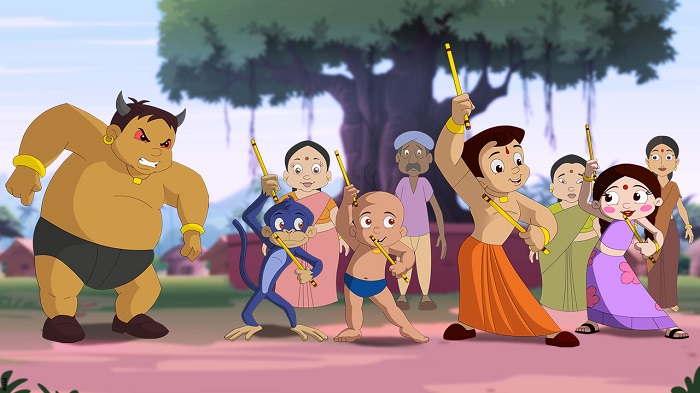The Banyan Deer in 1957 can be documented as the first major animation work in India. This project was helmed by the Films Division of India which had just started operations. In 2000, the industry got a better foothold and we saw a flow of animation content and creation.
The 80s and 90s were filled with foreign animation content on TV as the consumption of local Indian content were low and kids were more tuned to shows like Tom & Jerry, Mickey Mouse, Donald Duck, Jungle Book, Tales-Pin, He-Man and the Masters of the Universe, which were quite popular.

The studios which craved to introduce Indian content lacked the business acumen that led them into becoming servicing units for the West. New studios grew during this time for job work and a lot of collaborations with studios in USA and Europe were seen which helped the studios to increase their earnings multi-fold. Somewhere in this need to survive and earn the dream of creating Indian content for our market slowed.
Yet the good part was that during these times, animation and graphic services were used extensively in TV advertising. Advertising agencies explored the roots of animation to make their advertisements more dynamic and creative. This drive helped people to take notice that animation can be a key medium for telling story than being a supplement resource.
Towards the late 90s and 2000, channels like Disney, Pogo, Hungama, Nickelodeon started attracting selective Indian content but the biggest boon for our animation industry and Indian content came from the mid of 2000 when we saw a lot more Indian content on the channels like The Adventures of Tenali Raman, Chhota Birbal, Vikram Betaal, Krishna Movies and Little Krishna.
The turning point for original Indian content was definitely seen in 2008 when Chhota Bheem entered the homes of millions of kids in India and set a storm. Chhota Bheem with simple story telling, easy understanding, packed with fun and excitement made him the favorite cartoon show and the most lovable character till date.
This big break gave wings to our animators who have till now been just toying with concepts and ideas. This boom tempted the channels to open their doors and showcase more Indian content and shows. Today with over 25 kids’ channels and new OTT platforms emerging we see a lot of successful animation shows produced from our soil be it Motu Patlu, Mighty Raju, Super Bheem, Kalari Kids or Rudra which debuted recently.
Indian animation is entering the golden period and its time we pull our socks, take risks and dirty our hands to create extravagant shows that the world would stop and admire.
It will be very difficult to compare traditional and modern mediums as both have an appeal of its own given its time. While the traditional mediums made us imagine and challenge our thoughts, the present mediums help us create things which till some years back were only living in our imagination.
We Indians have a knack for storytelling. From courtroom story tellers to puppet shows and ‘nautankis’ the traditional ways have been simple yet colourful with unlimited imagination.
With the introduction of animation, graphics and technology the art of storytelling became more process driven. Various elements like content, animatic, style, colouring, lighting, texturing became more explanatory, involving and evolving to produce the story.
For me, Chhota Bheem has been my dream and a major part of my endeavour went into creating him and ensuring that he seamlessly walks into every child’s home and spread happiness and creates entertainment. It was and is this ownership of Chhota Bheem which has driven me and my entire team to work hard and create great adventures around him.

With Chhota Bheem being our own IP, Green Gold as a studio started expanding. With the success of the show we were working on multiple projects and associating with almost all the channels in India.
Owning the IP did play an important and strategic role in ploughing into various projects with the brand and at the same time monetising and growing the business capacity of the company.
(This article has been contributed by Green Gold Animation founder and CEO Rajiv Chilaka and AnimationXpress.com does not necessarily subscribe to these views).

